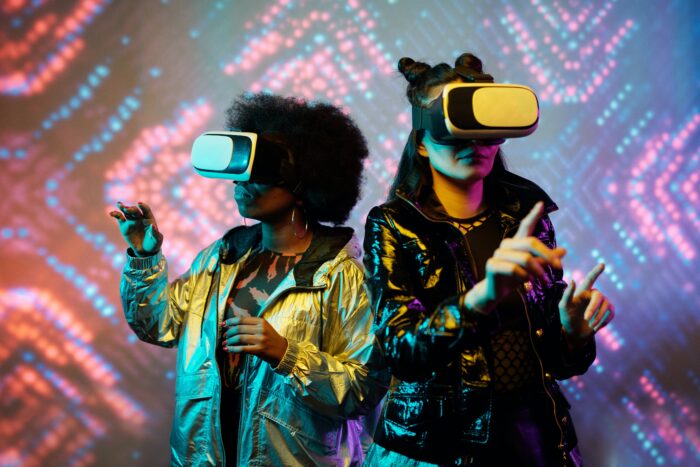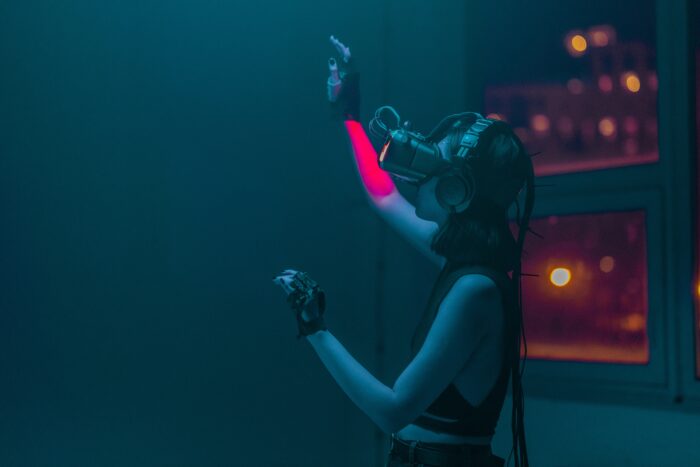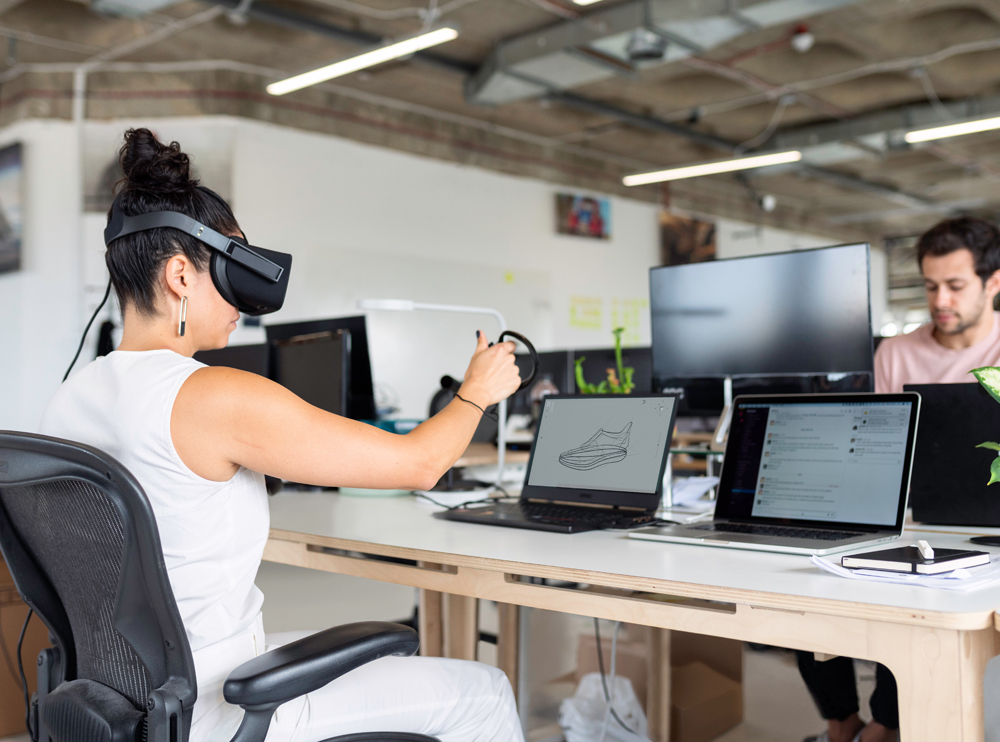Virtual and Augmented Reality (VR/AR) in web design. Virtual and augmented reality (VR/AR) technologies have been around for a while, but web design has only recently started to use them more. VR and AR are often thought of as tools for games and entertainment, but they also have a lot of potentials to make web design more immersive, interactive, and interesting for users.
In this blog post, we’ll talk about what VR/AR technologies are, how they work, their pros and cons, and how they can be used in web design.
What are augmented and virtual reality?
Virtual reality (VR) is a computer-generated simulation of a three-dimensional environment that can be experienced with special headsets. The simulation can be made to look like real-world situations or completely made-up ones. VR lets people interact with the virtual world, move around in it, and sometimes even move or change things in it.
Augmented reality (AR) is a technology that puts digital information on top of the real world. AR can be used on mobile devices, technology that you wear, or smart glasses. AR makes the real world more interesting by adding digital information, pictures, or videos to it.
In the past few years, both VR and AR technologies have come a long way and become easier to use. They are used in many fields, like medicine, education, gaming, and entertainment.

Advantages and Disadvantages of VR/AR in Web Design
VR and AR have a number of benefits that make them good for web design:
- Better User Experience: VR/AR can give users experiences that are immersive and interesting. They make it easier and more natural for users to interact with digital content, which makes the whole user experience better.
- Better Engagement: VR/AR can make content more interactive, memorable, and shareable, which can make users more interested in it.
- A unique way to set your brand apart: Using VR/AR in web design can make your site stand out from the rest and give your brand a unique way to set itself apart.
- Potential for Making Money: VR and AR can give businesses new ways to make money, like through in-app purchases or sponsorships.
But VR/AR technologies have some downsides that web designers should think about:
- High Cost: The hardware and software needed to make and run VR/AR content can make it expensive to make and run content.
- Technical Needs: Virtual reality and augmented reality technologies need powerful computers, headsets, and tracking systems, among other things, in order to work. This could make it hard for people who don’t have the right equipment to see the content.
- Learning Curve: Developing and using VR/AR technologies requires specific skills and knowledge, which can be hard for web designers who are new to the pitch.
Integrating VR/AR into Web Design
If you want to add VR/AR to your website design, you can do so in a few different ways:
- 360-degree product tours are a common way that VR/AR is used on e-commerce websites. They let customers see how a product looks from different angles and get a better idea of what it can do.
- Interactive Storytelling: VR and AR can be used to make websites that tell interactive and immersive stories. For example, a travel website could offer virtual tours of places or landmarks, which would give users a more interesting and memorable way to experience them.
- Gamification: VR/AR can be used to make web experiences more like games, which makes them more interesting and fun to use. For example, an educational website could use AR to make quizzes or challenges that users can interact with and that help them learn new things.
- Virtual Showrooms: VR/AR can be used to make virtual show rooms where people can see products or services in a more immersive and interactive way. For example, a website for interior design could use VR to create virtual showrooms that let users see how different pieces of furniture would look in their own homes.
- Training and Simulation: VR and AR can be used to make training and simulation experiences that are more realistic and immersive for users. For example, a medical website could use VR to create simulated surgeries or procedures that doctors and nurses could use to practise their skills in a safe and controlled environment.
- When designing a website with VR/AR, it’s important to keep in mind the technology’s technical needs and limits. VR/AR experiences can use a lot of resources and may need special hardware or software to work well. Also, it’s important to think about the content’s accessibility to make sure it can be used by all users, no matter what hardware or software they have.

Conclusion
Virtual and augmented reality technologies give web designers exciting chances to make websites that are more immersive, interesting, and memorable. Even though there are challenges and limits to putting VR/AR into web design, the benefits are huge, like making users more engaged, giving them a better experience, and setting you apart from your competitors.
As VR and AR technologies get easier to use and more widely available, more web designers will likely try them out and push the limits of what’s possible in web design. If you want to use VR/AR in your web design, it’s important to keep up with the latest trends and developments in the field and to think carefully about the technical requirements and how easily the content can be accessed.


